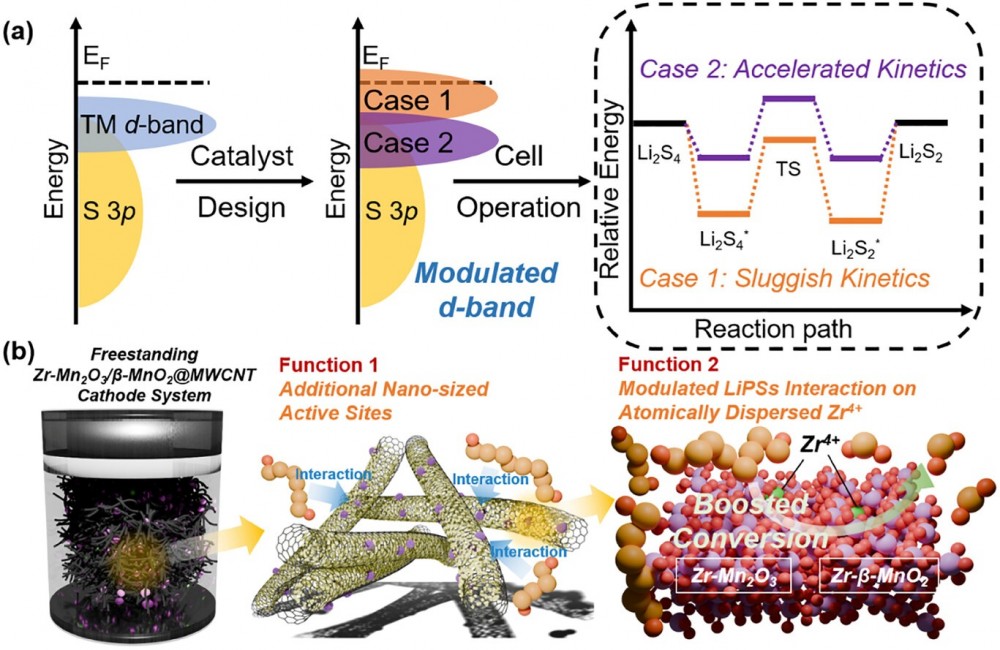
연구
Research Outcome
미래를 창조하는 포스텍 화학공학과
Tailoring Polysulfide Interaction with Balanced d-band Center via In-situ Construction of Atomically Dispersed Zr-Ox Sites in Mn2O3/β-MnO2 Heterostructure for Li-S Batteries
- Title of paper
- Tailoring Polysulfide Interaction with Balanced d-band Center via In-situ Construction of Atomically Dispersed Zr-Ox Sites in Mn2O3/β-MnO2 Heterostructure for Li-S Batteries
- Author
- [김원배 교수님 연구실] 단원자 활성점 도입을 통한 차세대 리튬황 배터리 계면의 폴리설파이드 상호작용 조절 연구
- Publication in journal
- Small 2025, 21, 2500646
- Publication date
- 20250327
[Abstract]
Although noteworthy research focuses on heterostructured catalysts for efficient polysulfide adsorption in lithium–sulfur (Li–S) batteries, the strategy for maximized electrocatalytic activity is less investigated. Herein, Mn2O3/β-MnO2 heterostructure electrocatalyst is engineered via in situ regulation of atomically dispersed Zr4+ sites in the form of Zr–Ox coordinated-structure as a highly stable freestanding cathode. The fine-tuned Zr4+ sites can adjust polysulfide adsorption inducing reduced overpotential, improved Li+ mobility, and boosted redox kinetics. Their achievements are synergistically derived from the inhibition of polysulfide migration, utilization of 3D Li2S nucleation mechanism, and modification of the d-band center of electrocatalysts, resulting in crack-free anode-protection, diffusion-favorable Li2S deposition, and sustainable sulfur-reactions. Eventually, the Zr0.1-Mn2O3/β-MnO2@MWCNT cathode demonstrates a high initial capacity of 808 mAh g−1 with a low average decay rate of 0.068% over 1000 cycles at 1 C, even along with an impressive cyclic stability at 5 C showing capacity up to 559.3 mAh g−1 with a decay rate of only 0.170% over 200 cycles. Noteworthy, the electrocatalyst-applied cell achieves high areal capacity for half-/full-cell (N/P: 2.86) up to 4.45/3.88 mAh cm−2 with 61.7/70.1% retention for 110/50 cycles under 4.6/5.4 mg cm−2 sulfur loading with electrolyte in 8 µL mgsulfur −1. This strategy highlights a new perspective to design an efficient cathode electrocatalyst for high-performance Li–S batteries.




